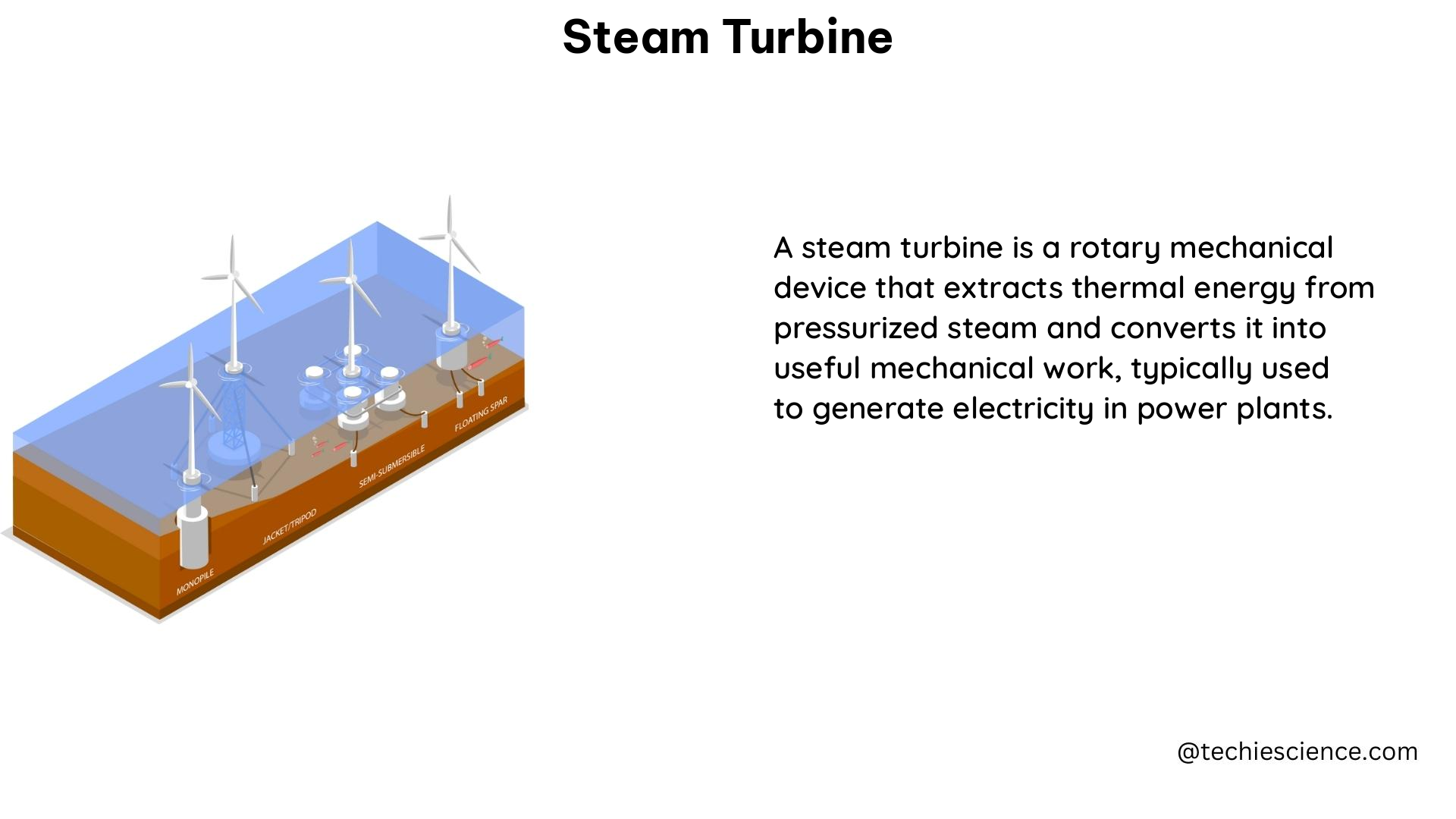Steam turbines are the backbone of modern power generation, converting the thermal energy of steam into mechanical work that drives generators and powers our world. As a seasoned expert on steam turbines, I’m excited to share a comprehensive guide that delves into the intricate details and measurable data points that define these critical components.
Understanding Steam Flow Rate
The steam flow rate is a crucial parameter that determines the performance and efficiency of a steam turbine. This metric represents the volume or mass of steam flowing through the turbine per unit of time, typically measured in kilograms per second (kg/s) or cubic meters per second (m³/s). Accurate measurement of steam flow rate is essential for optimizing the turbine’s operation and ensuring it is operating within its design parameters.
Inlet Steam Pressure and Temperature

The pressure and temperature of the steam entering the turbine are equally important factors that influence its performance. The inlet steam pressure, typically measured in bar or pounds per square inch (psi), is a crucial determinant of the enthalpy drop across the turbine and the work it can produce. Similarly, the inlet steam temperature, measured in degrees Celsius or Fahrenheit, is a key variable in calculating the theoretical work that the turbine can extract from the steam.
Outlet Steam Pressure and Temperature
The pressure and temperature of the steam exiting the turbine are equally important metrics to monitor. These parameters provide insights into the efficiency of the turbine and the quality of the steam at the outlet. Monitoring the outlet steam conditions helps identify potential issues, such as blade erosion or fouling, and enables timely maintenance to maintain optimal performance.
Turbine Efficiency
The turbine efficiency is a measure of the ratio between the actual work done by the turbine and the theoretical work that could be extracted from the steam. This metric is typically expressed as a percentage and can be calculated using the inlet and outlet steam conditions, as well as the shaft power output of the turbine. Maintaining high turbine efficiency is crucial for maximizing the overall power generation efficiency of the system.
Heat Rate
The heat rate is a measure of the amount of heat required to produce one unit of shaft power in the turbine. This metric is typically expressed in kilojoules per kilowatt-hour (kJ/kWh) or British thermal units per kilowatt-hour (Btu/kWh). Monitoring the heat rate can help identify any degradation in the turbine’s performance and guide maintenance decisions to optimize its efficiency.
Vibration Levels
Vibration levels in the turbine and its associated equipment are critical indicators of the turbine’s health and condition. Excessive vibration can lead to premature wear, bearing failures, and other mechanical issues. Continuous monitoring of vibration levels, using specialized sensors and analysis techniques, helps identify potential problems before they escalate and enables proactive maintenance to ensure the turbine’s longevity.
Exhaust Steam Flow Rate
The volume or mass of steam exiting the turbine per unit of time, known as the exhaust steam flow rate, is an important parameter for determining the turbine’s efficiency and the quality of the steam at the outlet. This metric, measured in kg/s or m³/s, provides insights into the turbine’s performance and can help identify any issues related to the steam path or the turbine’s design.
Lube Oil Flow Rate and Temperature
The flow rate and temperature of the lubricating oil used in the turbine are crucial for ensuring its proper operation and longevity. Monitoring these parameters helps maintain the optimal lubrication conditions, preventing premature wear and extending the turbine’s service life.
Bearing Temperature
The temperature of the bearings in the turbine is a critical indicator of their condition and the overall health of the turbine. Elevated bearing temperatures can signal issues such as misalignment, imbalance, or inadequate lubrication, which can lead to bearing failures and catastrophic turbine damage. Continuous monitoring of bearing temperatures is essential for proactive maintenance and reliable turbine operation.
Casing Temperature
The temperature of the turbine casing is another important parameter to monitor. Fluctuations in casing temperature can indicate issues such as steam leaks, thermal distortion, or other mechanical problems that can affect the turbine’s performance and longevity. Maintaining the casing temperature within the recommended range is crucial for ensuring the turbine’s safe and efficient operation.
By understanding and closely monitoring these key data points, steam turbine operators and maintenance teams can optimize the performance, efficiency, and reliability of these critical power generation components. This comprehensive guide provides a solid foundation for mastering the intricacies of steam turbine operation and maintenance, empowering you to make informed decisions and maintain your turbines at peak performance.
Reference:
- DS 13-3 Steam Turbines (Data Sheet) – FM Global
- Gross error detection in steam turbine measurements based on data reconciliation of inequality constraints
- Thermal Performance Evaluation and Assessment of Steam Turbine Units

The lambdageeks.com Core SME Team is a group of experienced subject matter experts from diverse scientific and technical fields including Physics, Chemistry, Technology,Electronics & Electrical Engineering, Automotive, Mechanical Engineering. Our team collaborates to create high-quality, well-researched articles on a wide range of science and technology topics for the lambdageeks.com website.
All Our Senior SME are having more than 7 Years of experience in the respective fields . They are either Working Industry Professionals or assocaited With different Universities. Refer Our Authors Page to get to know About our Core SMEs.